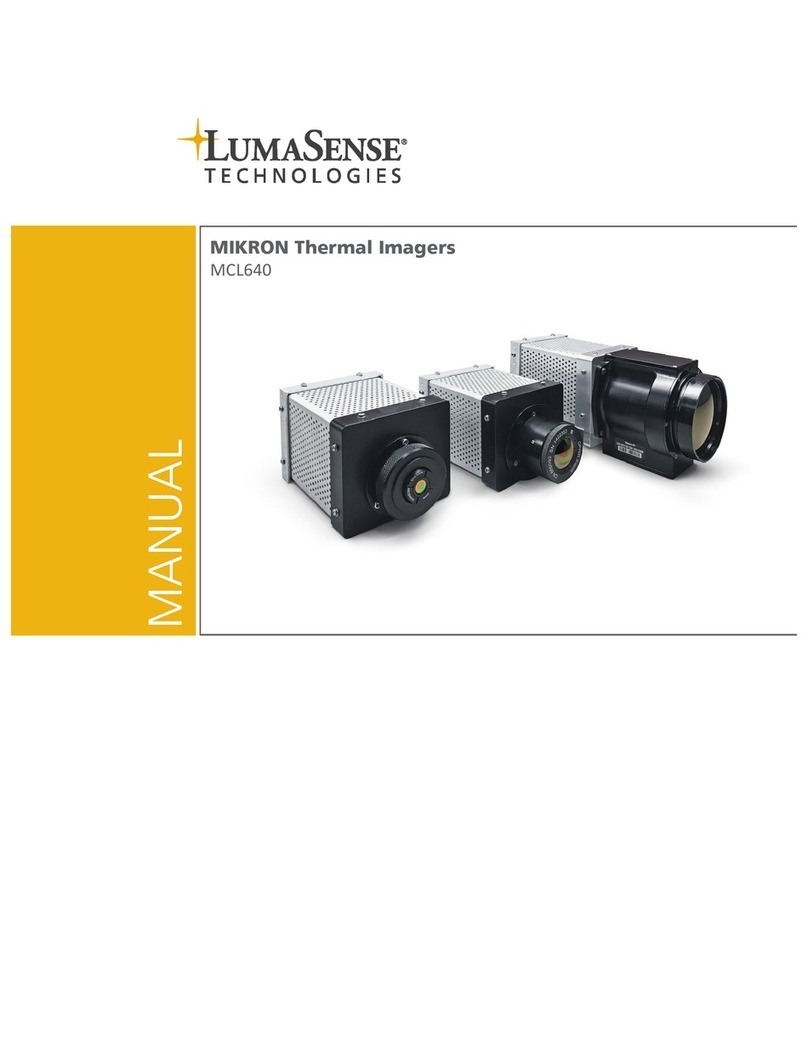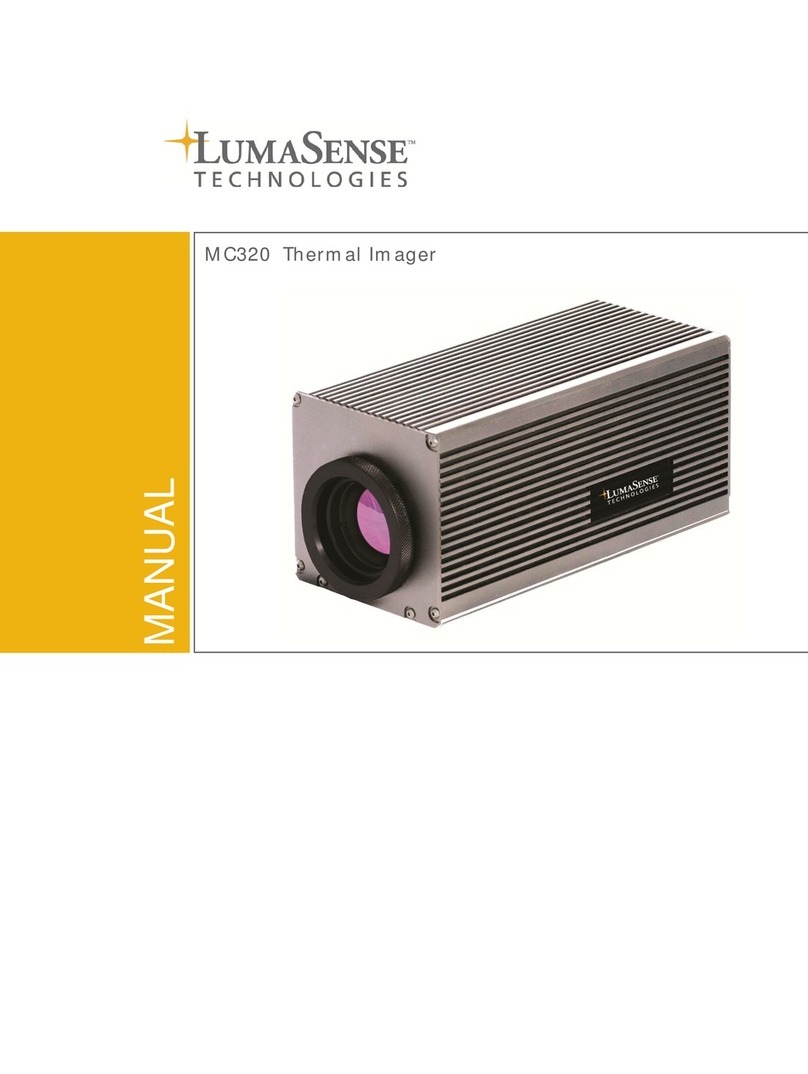
MCS640 Thermal Imager Manual Contents •iii
Contents
1General .................................................................................................................................................... 5
1.1 Information about the user manual ............................................................................................... 5
1.1.1 Legend ...................................................................................................................................5
1.2 Operator training ........................................................................................................................... 5
1.3 Regulatory information .................................................................................................................. 5
1.3.1 General conditions of operation............................................................................................5
1.4 Limit of liability and warranty ........................................................................................................ 6
1.5 Unpacking the instrument.............................................................................................................. 6
1.6 Service request, repair, or support................................................................................................. 7
1.7 Shipments to LumaSense for repair................................................................................................ 7
1.8 Transport, packaging, storage ........................................................................................................ 7
1.9 Disposal / decommissioning........................................................................................................... 8
2Introduction............................................................................................................................................. 9
2.1 System Overview............................................................................................................................ 9
2.1.1 System Features.....................................................................................................................9
2.1.2 System Configuration ..........................................................................................................10
2.2 Scope of Delivery.......................................................................................................................... 10
2.3 Technical Data.............................................................................................................................. 11
2.4 Dimensions................................................................................................................................... 12
2.5 Optics ........................................................................................................................................... 12
2.6 Camera Interface.......................................................................................................................... 13
2.7 Lenses .......................................................................................................................................... 14
2.8 Environmental Conditions ............................................................................................................ 14
3Getting Started ...................................................................................................................................... 15
3.1 Making the Connections............................................................................................................... 15
3.1.1 Connecting the Power .........................................................................................................15
3.1.2 Connecting the Ethernet Cable............................................................................................15
Connecting the Camera to a Dedicated Computer ................................................................................... 16
Connecting the Camera to a Network Device ........................................................................................... 16
3.2 Installing the Software ................................................................................................................. 17
3.2.1 Optimize the Network Interface Card..................................................................................18
3.2.2 Set the IP Address ................................................................................................................23
3.2.3 Configure the Windows Operating System..........................................................................25
3.2.4 Acquire Images ....................................................................................................................27
4Principle of Thermal Imaging ................................................................................................................. 29
4.1 Infrared Radiation ........................................................................................................................ 29
4.2 Emissivity ..................................................................................................................................... 29
4.3 Blackbody Radiation..................................................................................................................... 30
4.4 Blackbody Type Source and Emissivity ......................................................................................... 32





























